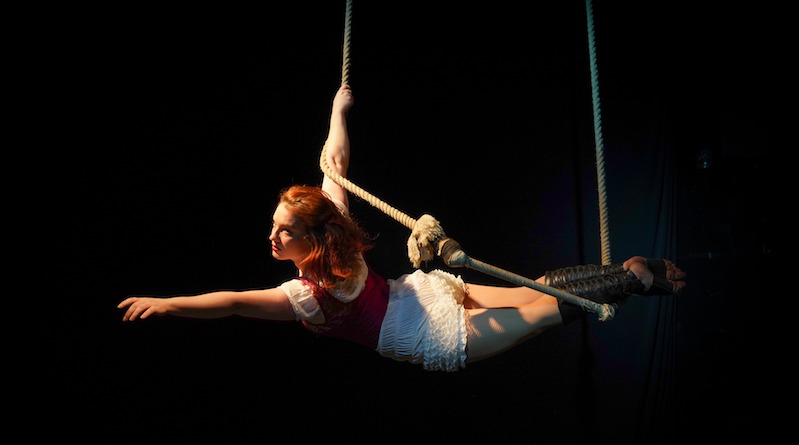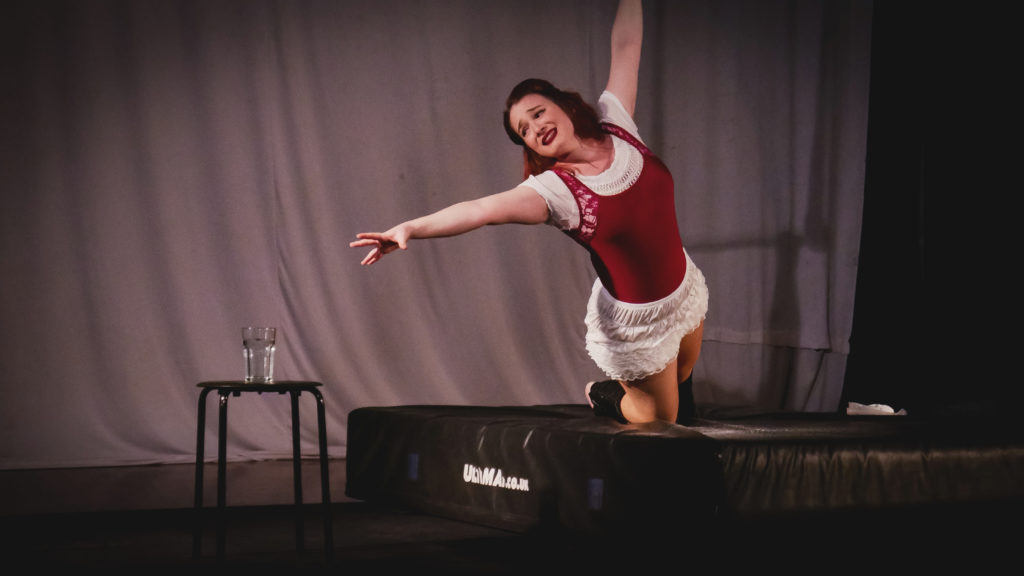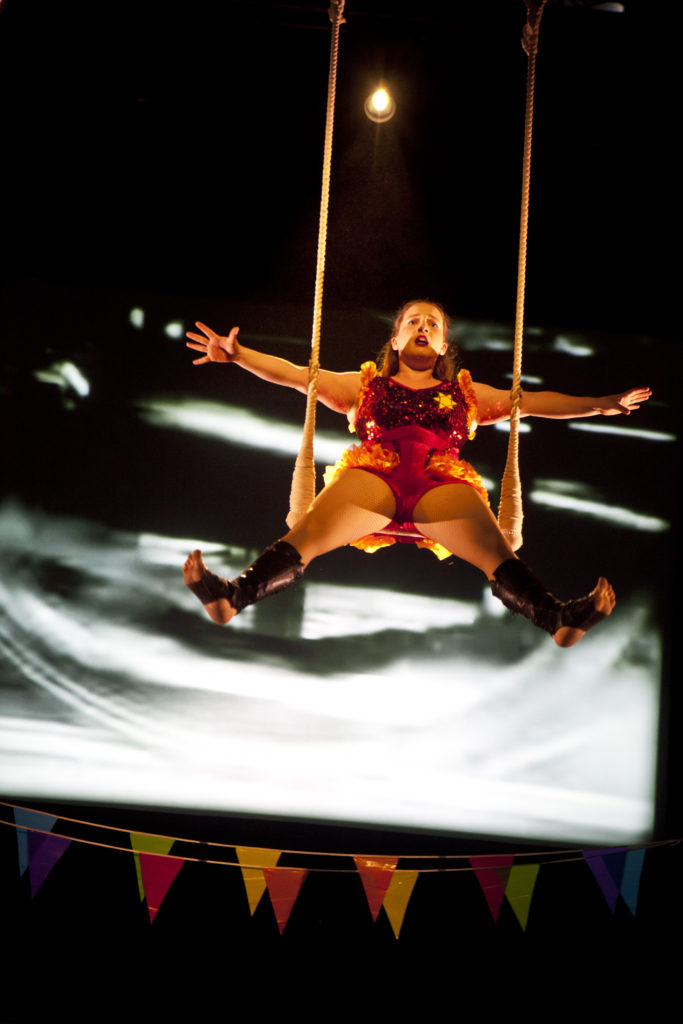The Escape Act: Hiding from the Holocaust – The Story of a Family Saved by the Circus

The Escape Act is a clever culmination of seven years of in depth research into the life of Irene Danner-Storm, a Jewish acrobat who evaded capture by the Nazis during the Holocaust, thanks to the Althoff Circus. The creator and performer of this one woman show is Stav Meishar. A grandchild of Holocaust survivors herself, she tells Irene’s story using a mixture of theatre, puppetry and circus, drawing on her own history to help us see the wider context.

We are given insight into the tragic fragmentation that is left behind after generations of a family are stolen. Meishar tells us of her quest to know more about her own history, sending off ‘a glob of spit’ to find answers about her heritage. Given this and the fact that she is a circus performer herself, it is no surprise that Meishar was drawn to the story of Irene. She first came across it through a simple google search, and has been immersed in it ever since.
The rigour with which the research has been conducted is evident throughout. The narrative is scattered with historical references that ground us in the reality of the story as we watch it unfold. We are able to zoom in and out, focussing in on the personal experiences and widening out to the bleak landscape of war. She does this using a multitude of props, puppets and costume changes, with plenty of complicated logistics for her to master. There is a suitcase which folds out to become a living room, filled with little cardboard figurines and a handbag from which she pulls out various props, including two small clown puppets. There is a children’s play tent designed like a big top at the side of the stage from which at various times she emerges with a new character on her shoulder, the puppets animated by her hand becoming theirs.
During the war, Irene was able to find comfort, safety and kindness in the circus but this was interrupted with abrupt reminders of the horror that was going on outside. This is particularly poignant in one scene, where we are swept up in her joy and excitement about going for a picnic, when reality hits and she is stopped in her tracks. She sees two young girls wearing yellow stars and learns that this is how Jews are now being marked. She performs a powerful monologue whilst on the trapeze, explaining the vulnerability that she feels. She describes how when the circus travels to a new location, alongside their carriages there are cattle trains, filled with people. Hauntingly cheerful circus music plays quietly in the background, contrasting with the hideous brutality described.

Although of course the content is sad, the show has plenty of light relief. The characters in the circus are playful and larger than life, with Adolf Althoff in particular representing hope in the dark. Adolf and his wife Maria agreed to welcome Irene into the circus despite it being illegal to hire Jews at the time. He is quoted to have said “We circus people see no difference between races or religions. Circus people live in the entire world and are of the entire world.” He was called upon to fight in the German army and in an especially funny scene we watch as Meishar reenacts him intentionally fudging up his training so badly that he is sent home the same day.
Irene’s background was one of circus royalty. She came from the Lorch family, a successful Jewish family run circus that toured throughout Europe and beyond. Although the show is focused on the story of Irene, the narrative is interjected with pieces of Meishar’s own family history. She comes out of character to directly address us, speaking about her grandfather and the effect that the holocaust had on her family. She speaks of her journey to gain insight, admitting ‘I know more of Irene’s family than I do my own’.

This show is just one facet of Meishar’s larger research project on circus Jews under national socialism. It can be booked on its own or as a combination with its educational pieces including an exhibition, a talk and circus and theatre workshops. It is heart-breaking to think about how many stories have been lost and the importance of this one being kept alive is apparent. This is an excellent example of how performance can be used to inform and educate. It is not hard to see why we may be in need of a reminder of the danger of complacency around divisive language and politics. As Meishar puts; “In a world where countries close their doors to immigrants, where fascist voices are once again getting stronger, it feels more urgent than ever to ensure that history isn’t forgotten.”
The Escape Act is currently in the middle of its first ever UK tour, already having successful shows at Jacksons Lane in London and Circomedia in Bristol. The tour continues to circusMASH in Birmingham on the 26th – 27th October and the Lowry in Salford on the 29th October. The show leaves me wanting to learn more and I am excited to hear that Meishar intends to compile these stories into a book. This project will only expand from here and I am keen to see how it will grow in the future.
Related content: How a German Circus Saved a Jewish Family of Circus Artists
All photos courtesy of Stav Meishar. Feature photo credit: Asaf Sagi
Editor's Note: At StageLync, an international platform for the performing arts, we celebrate the diversity of our writers' backgrounds. We recognize and support their choice to use either American or British English in their articles, respecting their individual preferences and origins. This policy allows us to embrace a wide range of linguistic expressions, enriching our content and reflecting the global nature of our community.
🎧 Join us on the StageLync Podcast for inspiring stories from the world of performing arts! Tune in to hear from the creative minds who bring magic to life, both onstage and behind the scenes. 🎙️ 👉 Listen now!
